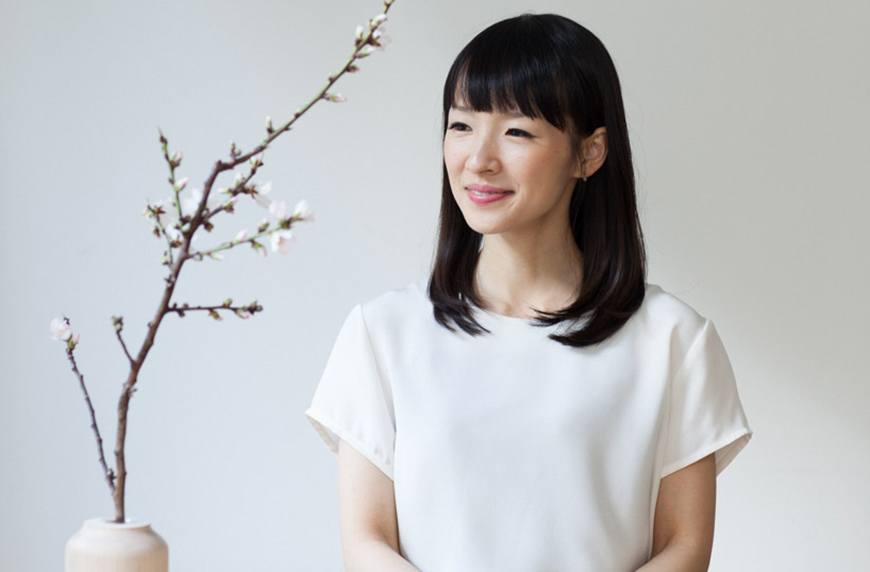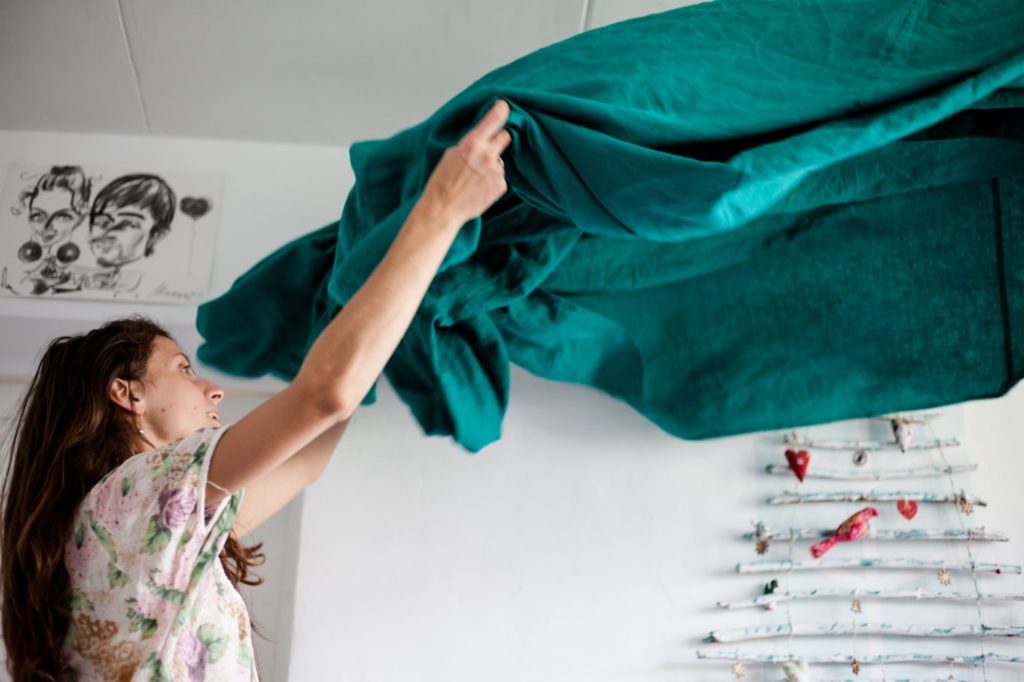Netflix has come out with some pretty great documentaries and reality shows lately that have us glued to our couches (I’m looking at you, Fyre), but there is one in particular that has us talking. Going beyond being a feel-good show, it has influenced real change to our lifestyles and birthed countless memes because this is the internet, where a direct correlation exists between a show’s popularity and the number of memes created in its honor. So by now, I don’t have to tell you that Netflix’s latest baby, Tidying Up with Marie Kondo, is popular.
The minimalist and author of The Life Changing Magic of Tidying Up: The Japanese Art of Decluttering and Organizing has garnered a huge following of minimalist-hopefuls and people tired of feeling trapped by their things. Minimalism is the concept of less is more. Owning less things and owning only the things that matter is the key to a more peaceful and productive life, according to those who follow the minimalism creed. Kondo puts a few different spins on how she chooses to help us declutter, primarily by asking us to only hold onto things that spark joy. Things that make us happy and feel good when we hold them; if they don’t pass the spark test, they get donated or thrown away, depending on their condition. While Marie Kondo is not the sole power behind the minimalism momentum, it’s undeniable how many of us love and follow her wisdom. In her Netflix special, she shines. She has a quiet calm to her; she is effortlessly loving, warm, approachable, and genuine. She does not use shame and guilt as means of inspiration, but rather compassion and her ability to relate to others to help motivate change.

Marie Kondo helps us tidy by focusing on eliminating via categories, rather than rooms, with her KonMari method highlighting items in five categories:
- Clothing
- Books
- Papers
- Komono (misc. things, like garage and kitchen)
- Sentimental
 My husband and I were particularly interested in watching this show, because we live in a tiny home with our two children and pets. In 400 square feet, we have managed to fit our entire family without too much clutter, but I still sometimes feel overwhelmed by how much I have to clean up. I echo the same sentiments of many people, mothers especially, when I say that sometimes I feel like I spend more time cleaning my life rather than enjoying it. Because living in a small space means clutter accumulates easily, I am constantly on the lookout for new tips and ways to make my home more enjoyable. So we turned on Tidying Up, and I jotted down my thoughts along the way. Also, after one episode, we decided to grab our mountain of laundry and fold while watching, because we just couldn’t help it. The further along into the show we were, the more compelled we were to clean. Ha!
My husband and I were particularly interested in watching this show, because we live in a tiny home with our two children and pets. In 400 square feet, we have managed to fit our entire family without too much clutter, but I still sometimes feel overwhelmed by how much I have to clean up. I echo the same sentiments of many people, mothers especially, when I say that sometimes I feel like I spend more time cleaning my life rather than enjoying it. Because living in a small space means clutter accumulates easily, I am constantly on the lookout for new tips and ways to make my home more enjoyable. So we turned on Tidying Up, and I jotted down my thoughts along the way. Also, after one episode, we decided to grab our mountain of laundry and fold while watching, because we just couldn’t help it. The further along into the show we were, the more compelled we were to clean. Ha!
Marie Kondo doesn’t charge in and start telling clients what to do and where to put what. She first takes time to talk with the family, getting to know them, and we are shown that these episodes are going to be much more than just cleaning house. Each family has underlying problems that have either manifested into or magnified by a cluttered, messy home that they can never quite get on top of. The first episode opens up with a young couple with two children. The mom works part-time and has her hands full with their kids the rest of the time, and dad works full-time, if not overtime. There is visible tension because the husband doesn’t really understand how his wife can’t stay on top of everything, and the wife who doesn’t understand why her husband gives her a hard time about it. Both are visibly drained and tired of their misunderstandings and cluttered home. Marie Kondo shows them ways to not only manage their clutter and curb spending habits, but in doing so, she helps them grow closer together and appreciate their home for what it has given them. This entire episode really resonated with me, and I’m sure many others, who carry the weight of the mental workload. In the mess and exhaustion, it’s easy to lose sight of the love between partners and enjoying our kids, rather than just supervising them. This is where the show finds its heart. Every episode is relatable on some level, because the reality is our mess is often the result of other underlying issues.
Many of the episodes also focus on sentimental items, because we all have things we cannot part with. Having some sentimental items is okay by Kondo; the problem is when they end up piling and you never see them after tucking them into some box to sit for years. It isn’t that you can’t have things or should give up the necklace your grandmother gave you as a child. You should have things, so long as they don’t add to your stress. When she leaves a family after her time with them is done, she does not leave an empty house in her wake. There is a common misconception that minimalism means empty, white boxes, and that could not be further from the truth. Yes, the idea involves paring down items and eliminating things that are unnecessary, but if there are things that bring you immense joy without practical use, keep them. Instead of removal, she supports putting them on display. Take mementos and photographs out of old boxes and place them on a shelf, or in a beautiful book for your coffee table. There are ways to be a minimalist with a colorful, full home, while also releasing clutter’s chokehold on our lives.
While Marie Kondo does this at the beginning of each episode, I want to end this with it. This habit is probably the most valuable, crucial element to her process: honoring and thanking your home. Marie Kondo finds an open space in a family’s home (ideally somewhere welcoming, not near the entrance), and sits on her knees, closing her eyes. “Each time I return home, I greet the house. This is my way of expressing thanks for the shelter and comfort it provides me. You can even do this by reflecting on your gratitude in your mind as you walk through the front door. A change in perspective can alter your reality,” she says. I fell in love with the concept, because we often overlook the original purpose and value of our homes. Where we live is where we cultivate our lives. We have shelter, a place to come together with our families and friends, a place to be safe. Even if we rent, or want to move to a bigger or nicer dwelling, what we have right now is giving us what we need. Gratitude really enhances our ability to enjoy what we already have.
While Tidying Up won’t magically fix all of your problems, it’s refreshing to watch and might provide some much-needed insight to help you learn to love and nurture your space again. At the very least, it might encourage you to donate to your local thrift store or shelter, and that alone is worth your time.


